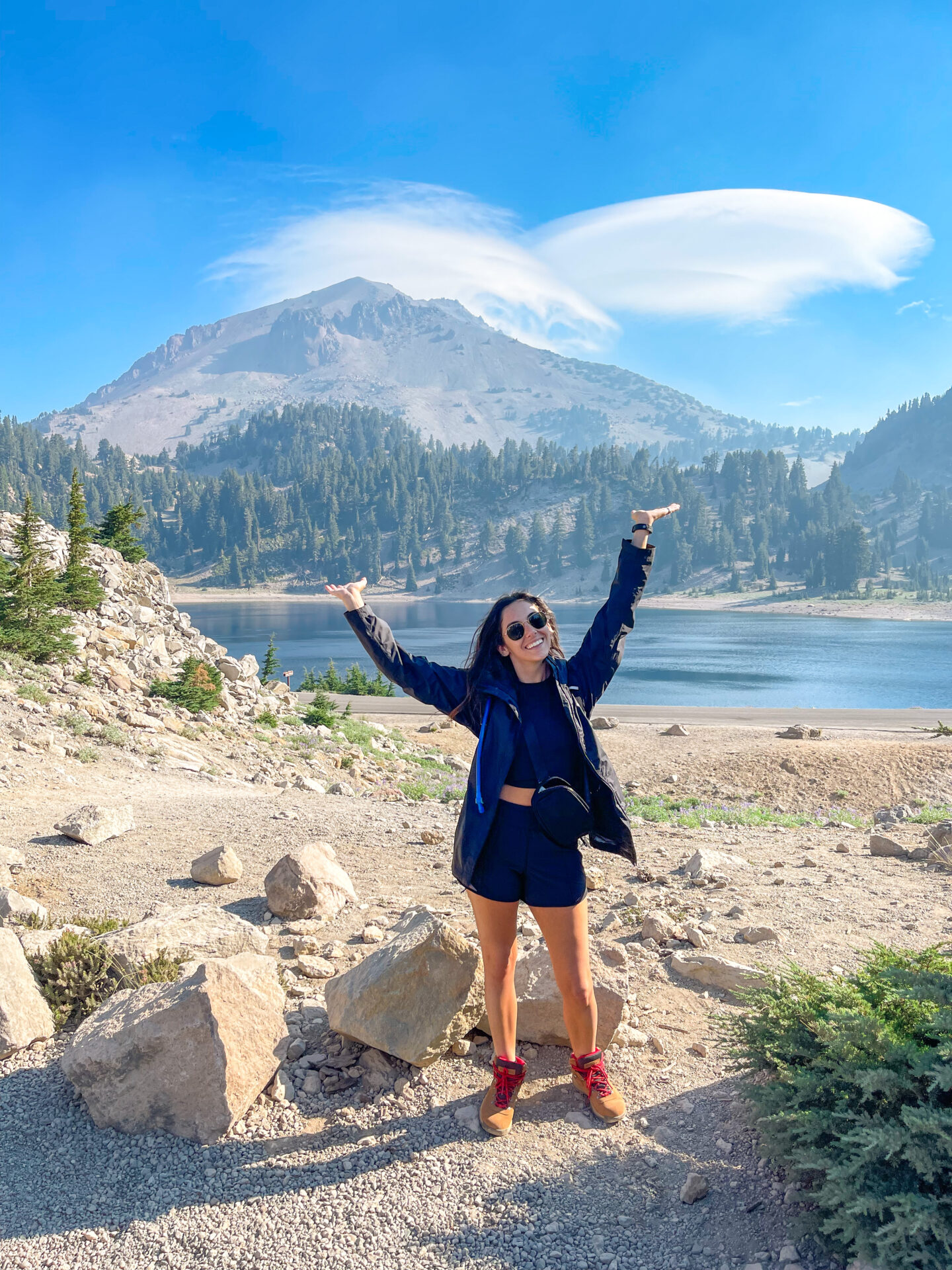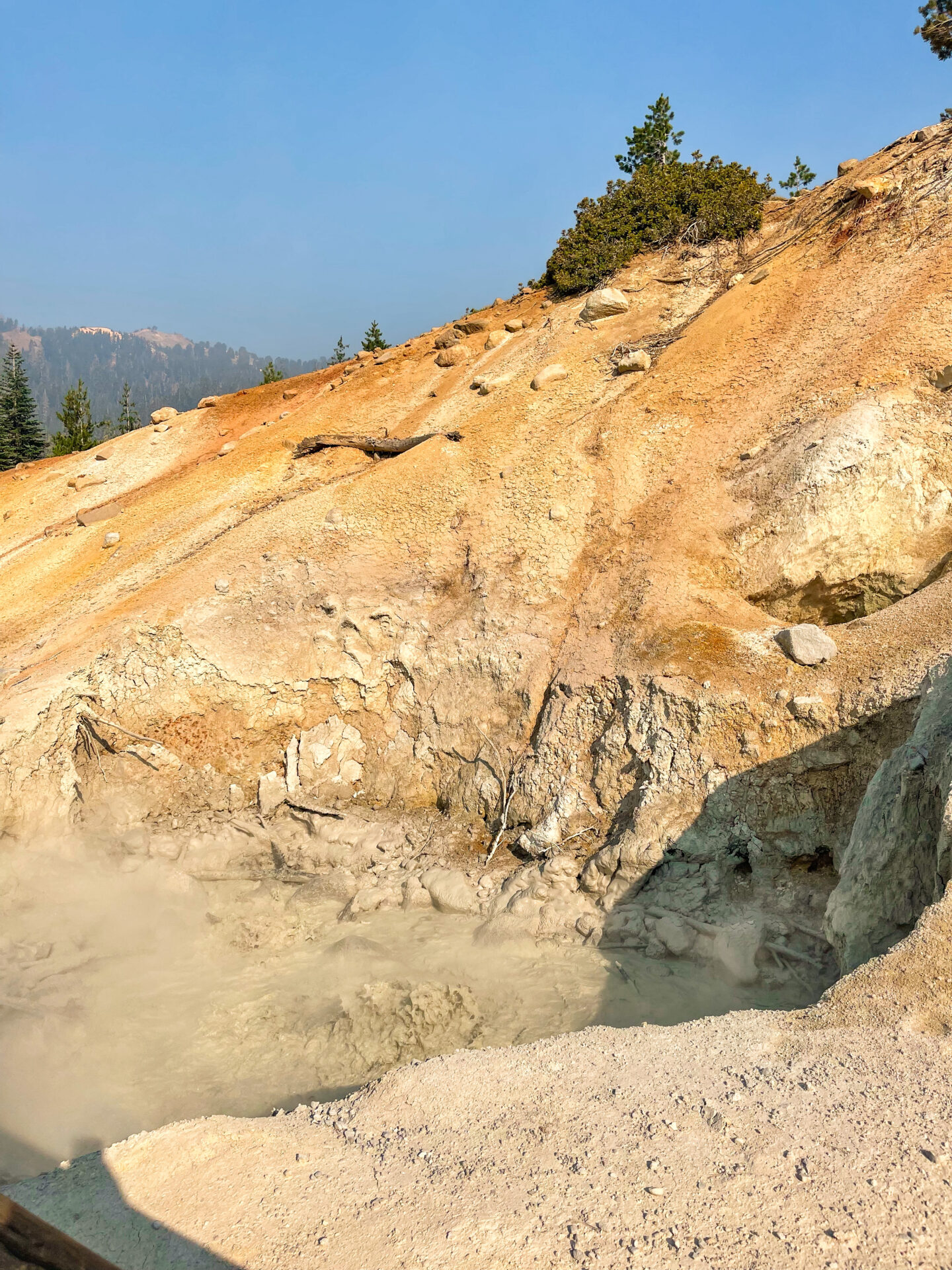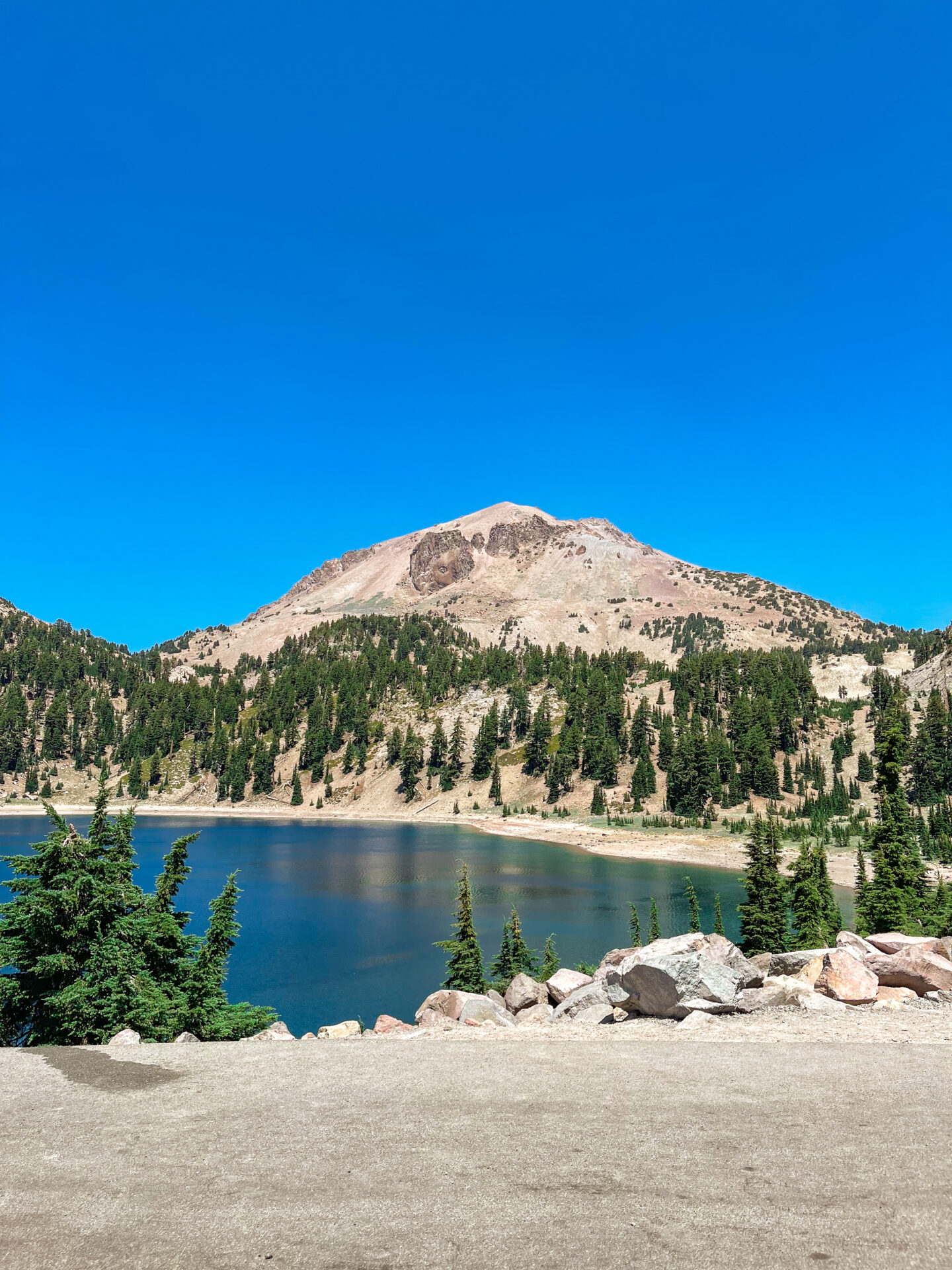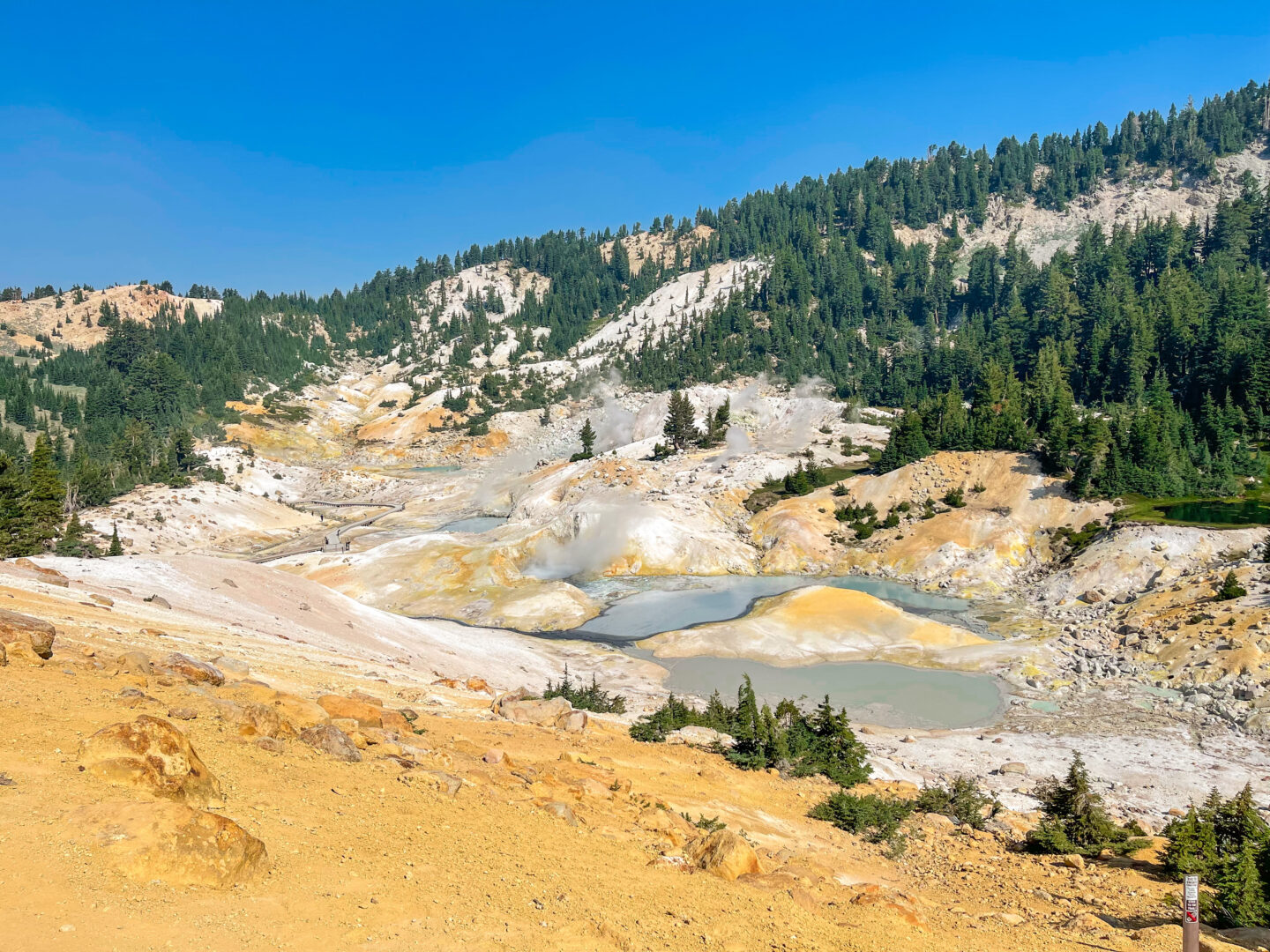
Lassen Volcanic National Park is probably one of the most underrated national parks in California. Overall, California has 9 national parks. It’s the most in any state. Somehow, we tend to forget about good ole’ Lassen nestled up in Northern California. I am born and raised in Northern California, so everyone knew about Lassen Volcanic National Park. We call it the mini-version of Yellowstone National Park.
For those who may not know, I am currently on a mission to visit all of the national parks in America. I have seen 18/63 so far. I started visiting the parks back in June of 2021. I would like to call myself a national park aficionado, and have learned a thing or two about visiting the parks. It goes without a doubt that Lassen Volcanic National Park is one that cannot be missed.
With that being said, here is my guide to visiting Lassen Volcanic National Park.
Lassen Volcanic National Park – The Low Down
Let me give you the lowdown on the history of Lassen Volcanic National Park. We’re talking about millions of years of volcanic action shaping this place into the epic wonderland it is today. Picture this: eruptions going off like fireworks from about 600,000 years ago until a mere century ago. And let me tell you, the big shebang happened in 1915 when Lassen Peak erupted, sending ash and rock flying all over the place.
Now, here’s where things get interesting. People couldn’t ignore this volcanic show, so they said, “Hey, let’s preserve this awesome place!” That’s when Lassen Volcanic National Park came into the picture, officially established on August 9, 1916. It became the 15th national park in the whole darn United States! The goal was simple: protect the mind-blowing volcanic features and give folks like you and me a chance to soak up all that geological goodness.
Fast forward to today, and Lassen Volcanic National Park is a mecca for adventure seekers, nature enthusiasts, and anyone who appreciates the raw power of nature. It’s a playground for hiking, camping, and exploring the volcanic landscape like you’ve never seen before.
Alright, let’s dive into the goods!
Where is Lassen Volcanic National Park located?
Lassen Volcanic National Park is nestled in the beautiful state of California, specifically in the northeastern part of the state. It spans across Shasta County and Tehama County, showcasing its natural wonders in the southernmost region of the Cascade Range. The closet airports are Sacramento International Airport and Reno International Airport. Both take roughly 2 hours and 45 minutes to drive to the park.
RESERVATIONS
For day visits, no reservations are required. You can simply show up, pay the entrance fee (more on that below), and start exploring the park. However, it’s always a good idea to check the park’s official website or contact them directly to get the most up-to-date information, as policies can change.
FEES
To enter Lassen Volcanic National Park, there is an entrance fee. As of 2021, the fees are as follows:
- Private Vehicle: $30 per vehicle (valid for 7 days)
- Motorcycle: $25 per motorcycle (valid for 7 days)
- Pedestrians, Bicyclists, and Non-Commercial Organized Groups: $15 per person (valid for 7 days)
It’s important to note that the fees mentioned above are subject to change, so it’s always a good idea to double-check the current fees before your visit. Additionally, if you plan to visit other national parks in the area, you may want to consider purchasing an America the Beautiful Pass, which grants access to multiple parks for an annual fee.
Remember, fees collected help support the maintenance and preservation of the park, ensuring that future generations can continue to enjoy its wonders. So, be prepared to pay your share and contribute to the conservation efforts while you embark on your Lassen Volcanic National Park adventure.
WHERE TO STAY IN LASSEN VOLCANIC NATIONAL PARK
When it comes to accommodations in Lassen Volcanic National Park, you’ve got a few options to choose from:
- Camping: If you’re a fan of sleeping under the stars, the park offers several developed campgrounds where you can pitch your tent or park your RV. Some popular campgrounds include Manzanita Lake, Summit Lake, and Butte Lake. Keep in mind that these campgrounds may have limited services, so be prepared with your camping gear and supplies.
- Backcountry Camping: For those seeking a more remote experience, Lassen Volcanic National Park also allows backcountry camping in designated areas. Permits are required, so make sure to obtain one before setting off on your backcountry adventure.
- Lodging: If camping isn’t your thing, don’t fret! The park offers a few options for lodging as well. The Manzanita Lake Camping Cabins provide a cozy retreat, while Drakesbad Guest Ranch offers rustic accommodations with meals included. Keep in mind that availability can be limited, so it’s a good idea to book well in advance.
- Nearby Accommodations: If you prefer to stay outside the park, there are various lodging options available in nearby communities. Chester, Red Bluff and Redding are popular towns that offer a range of hotels, motels, cabins, and vacation rentals. Just keep in mind that staying outside the park means a bit of a commute to reach the park’s main attractions.
No matter which option you choose, it’s always a good idea to make reservations in advance, especially during the peak summer season.
When is the best time to visit Lassen Volcanic National Park?

The best time to visit Lassen Volcanic National Park depends on your preferences and what you’d like to experience. Here are some considerations to help you decide:
Summer (June to September): This is the most popular time to visit the park. The snow has melted, and most roads and trails are accessible, allowing you to explore a wider range of areas. The weather during this time is generally pleasant, with temperatures ranging from the 70s to 80s Fahrenheit (20s to 30s Celsius). It’s also the peak season for camping and other outdoor activities.
Spring (April to May) and Fall (October): These transitional seasons offer mild temperatures and fewer crowds compared to summer. Spring brings vibrant wildflowers, while fall offers stunning foliage colors. Keep in mind that some higher elevation trails may still have snow in early spring or late fall.
Winter (December to March): If you’re a fan of winter activities and don’t mind the colder temperatures, Lassen Volcanic National Park can be a winter wonderland. During this time, you can enjoy cross-country skiing, snowshoeing, and snow camping. However, note that certain areas of the park may be inaccessible due to snow, and road closures are common.
It’s important to check the park’s website or contact the visitor center before your trip to get the most up-to-date information on weather conditions, road closures, and trail accessibility. The park’s elevation (ranging from approximately 5,700 to 10,500 feet) can also affect the weather and conditions, so be prepared for changes and pack accordingly.
What are some things to do in Lassen Volcanic National Park?
Oh, buckle up, my friend! Lassen Volcanic National Park is jam-packed with incredible things to do.
Here are just a few highlights to get your adventure juices flowing:
- Explore the Volcanic Features.
- Go on a hike!
- Check out the visitor center
- Take a scenic drive
- Have fun with some Winter activities!
Let me spill the beans on the top spots you absolutely can’t miss in Lassen Volcanic National Park. Get ready for some epic sights and unforgettable hikes that will blow your socks off!



EXPLORE THE VOLCANIC FEATURES
Sulfur Works: This should always be your first stop when visiting Lassen Volcanic National Park. It’s a quick pit stop off the side of the road. You’ll park in the designated parking area ad walk a few hundred feet to see some mud pots bubbling and steaming like nobody’s business! This will smell pretty bad… like rotten eggs, but it’s still a really cool sight to see! Highly recommend.

Bumpass Hell: Next, we’ve got Bumpass Hell, and no, it’s not a funky dance move. It’s the park’s largest hydrothermal area, and it’s downright mesmerizing. Picture this: boiling mud pots, hissing steam vents, and vibrant colors. Pretty cool right? There is a boardwalk that lets you get up close and personal with the steaming vents and acid pools.
Be prepared, the place smells like rotten eggs just like Sulfur Works! To reach this, you can take the Bumpass Hell Trail, a 3-mile roundtrip (5 km) hike. Plan for about 2-3 hours, depending on how many selfies you snap along the way. Also, make sure to get there early as this is the most popular hike at the park. The parking lot WILL fill up fast.
Devil’s Kitchen: Devil’s Kitchen is a fascinating geothermal area located in Lassen Volcanic National Park. It is known for its unique hydrothermal features and diverse volcanic activity. Devil’s Kitchen is situated in the northern part of the park, near the Warner Valley area. It can be accessed by taking the Warner Valley Road, which is a narrow and winding road that branches off from the main park road. The hike to Devil’s Kitchen in Lassen Volcanic National Park is relatively short and easy.
The round-trip distance is approximately 1.5 miles (2.4 kilometers), and it typically takes about 1-2 hours to complete, depending on your pace and the time spent exploring the area. One of the highlights of Devil’s Kitchen is the presence of colorful hot springs and pools. These pools showcase vibrant hues due to the presence of different minerals and microbial mats. The colors can range from vivid blues and greens to shades of yellow and orange, creating a visually stunning display.
HIKING IN LASSEN VOLCANIC NATIONAL PARK
Aside from the amazing volcanic activity, there are plenty of exhilarating hikes to experience at Lassen Volcanic National Park!
Kings Creek Falls – This is a moderate hike leading to a stunning 40-foot waterfall. Enjoy beautiful meadows and the picturesque Kings Creek along the way. The hike is 2 miles (3.2 km) round trip and can take around 1.5 hours to complete.
Lassen Peak Trail – One of the notorious hikes at Lassen Volcanic National Park and it should not be missed! It is a challenging but rewarding hike to the summit of Lassen Peak, the park’s iconic volcano. Enjoy panoramic views of the surrounding landscape. The hike is 5 miles (8 km) round trip and can take 4-5 hours to complete.
Cinder Cone Trail – This is a moderately difficult hike leading to the top of Cinder Cone, where you can marvel at the Fantastic Lava Beds and the expansive Painted Dunes. This should also be on your list! It is 4 miles (6.4 km) round trip and takes 3 hours to complete.
Mill Creek Falls – This is a scenic trail that takes you through lush forests to Mill Creek Falls, a cascading waterfall surrounded by vibrant wildflowers during the summer. It is 3.8 miles (6.1 km) round trip and takes about 2.5 hours to complete.
Cold Boiling Lake – This is a relatively easy hike to Cold Boiling Lake, a fascinating thermal feature where bubbles constantly rise to the surface. It is 4.2 miles (6.8 km) round trip and takes 2.5 hours to complete.
SCENIC DRIVES IN LASSEN VOLCANIC NATIONAL PARK
If hiking is not your thang, not a problem!
The scenic drive in Lassen Volcanic National Park is called the Lassen Volcanic National Park Highway, also known as the Lassen Volcanic National Park Scenic Drive. It is a picturesque route that offers breathtaking views of the park’s volcanic landscapes and natural wonders.
Here are some highlights and points of interest along the drive: (some of these spots were mentioned above, but give you an opportunity to see them without hiking)
- Sulphur Works: A hydrothermal area with steam vents and boiling mud pots. You can take a short walk to observe these fascinating geothermal features.
- Bumpass Hell Overlook: A viewpoint that provides a panoramic vista of Bumpass Hell, the park’s largest hydrothermal area. You can see steaming fumaroles and colorful hot springs from a distance.

Kings Creek Falls: While this waterfall can also be accessed via a hike, you can catch a glimpse of it from the scenic drive. Look for the viewpoint to admire the cascading waters of Kings Creek.
- Emerald Lake and Reflection Lake: These serene alpine lakes offer stunning views and opportunities for photography. The crystal-clear waters reflect the surrounding volcanic peaks and lush landscapes.
- Devastated Area Interpretive Trail: A short trail that leads through a volcanic landscape devastated by the eruptions of Lassen Peak in the early 20th century. Interpretive signs provide information about the area’s recovery.
- Lassen Peak Trailhead: The starting point for the hike up to the summit of Lassen Peak. You can stop here to take in the view of the iconic volcano and the surrounding wilderness.
The Lassen Volcanic National Park Highway is approximately 30 miles (48 km) long, stretching from the southwest entrance near the Kohm Yah-mah-nee Visitor Center to the northwest entrance at Manzanita Lake. The drive offers numerous turnouts and viewpoints where you can stop, take photos, and enjoy the scenic beauty of the park.
It’s important to note that the highway is closed during winter due to heavy snowfall, typically from late October to late May or early June. Therefore, the scenic drive is typically accessible during the summer and early fall, offering a spectacular way to explore the park’s volcanic wonders from the comfort of your vehicle.
Is a trip to Lassen Volcanic National Park worth it?
Without a doubt! Yes, a trip to Lassen Volcanic National Park is definitely worth it for nature enthusiasts, outdoor adventurers, and anyone seeking to explore unique volcanic landscapes. While each person’s interests and preferences may vary, Lassen Volcanic National Park offers a remarkable and distinct natural environment, making it a worthwhile destination for those seeking outdoor adventure, scenic beauty, and a deeper understanding of volcanic activity and its impact on the landscape.


